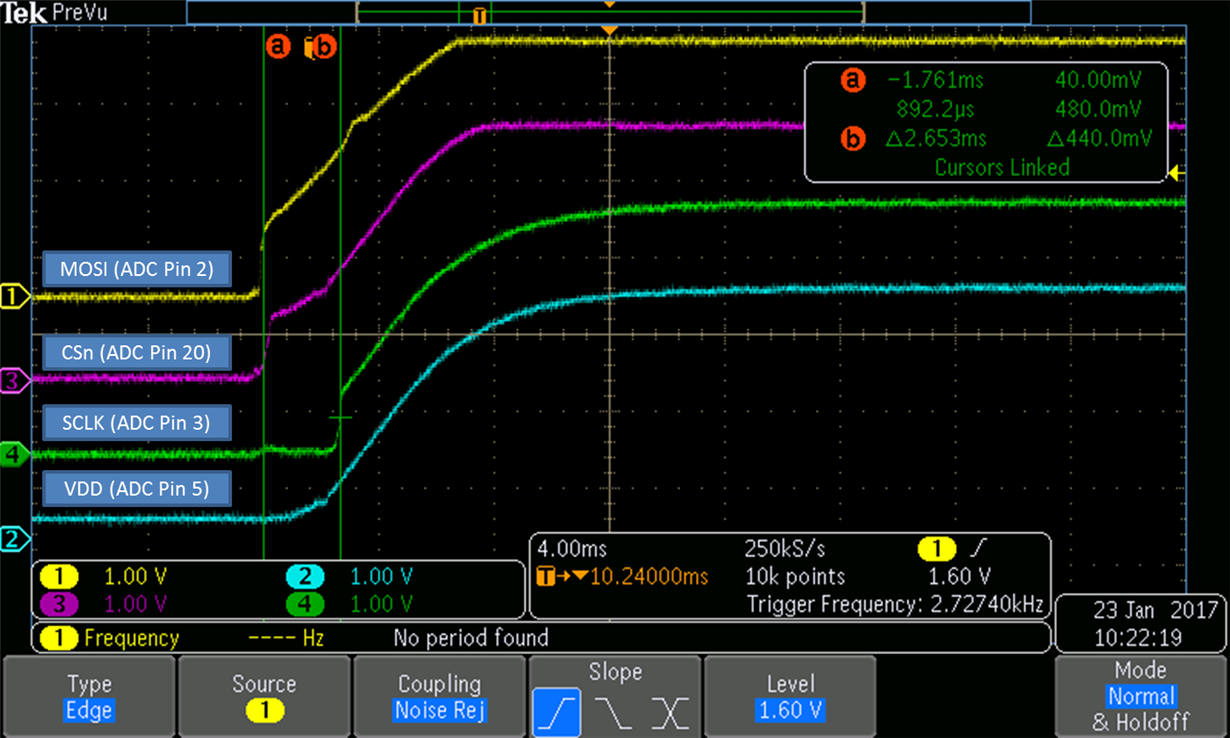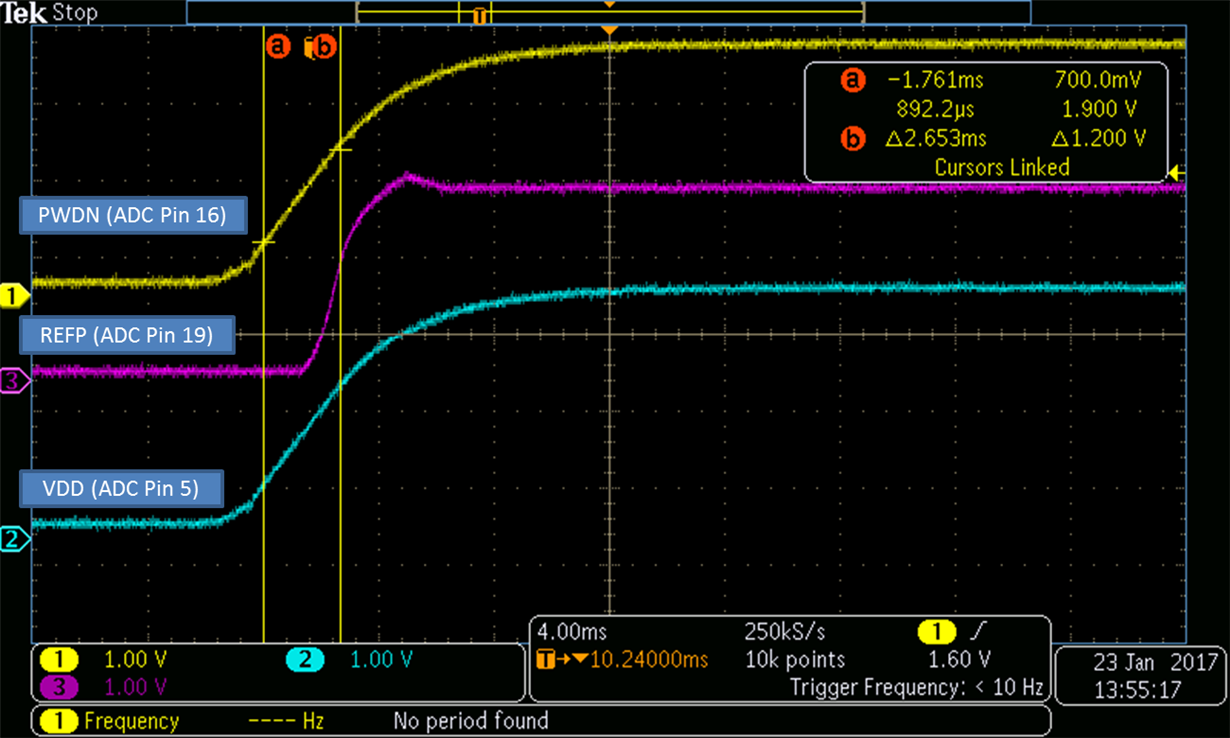We’ve been using the TLV2548IDW ADC in our product (several devices per unit) for some time and have experienced a very rare event where after power-up, one of the devices (the same physical device each time) either doesn’t respond to SPI transactions, or is driving SPI MISO with all-ones data (because we have a pull-up on MISO it’s hard to tell which of these is happening). Meanwhile, the other TLV2548 devices in the system are functioning consistently good. All devices get CFG register initialized to the same value (0x0004) which is basically the register default with only the EOC/INTn output pin mode set to EOC mode. With the problem present, if we can do a soft reset of our processor, the ADC in question starts to function and the problem goes away. The problem only happens at power-up and has happened on a few different units. Also, when running in this failed state (SDO all-ones output or tristate) for ~10 minutes, our processor got hung in a routine that polls the EOC pin for conversion completion. This seems to indicate that the device suddenly got out of the bad state and asserted INTn (instead of EOC). Are there any conditions that can cause the device to get into this bad state upon power-up?



